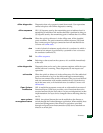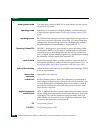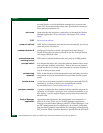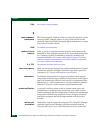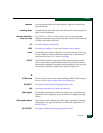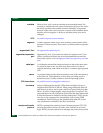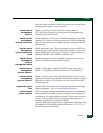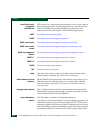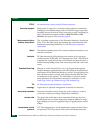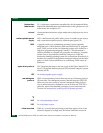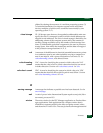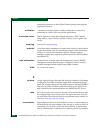
Glossary
g-45
Glossary
from one system to another. They do not specify how the mail appli-
cation accepts, presents, or stores the mail.
simple network
management
protocol
SNMP. A transmission control protocol/Internet protocol
(TCP/IP)-derived protocol governing network management and
monitoring of network devices.
simple network
management
protocol community
SNMP community. Also known as SNMP community string. SNMP
community is a cluster of managed products (in SNMP terminology,
hosts) to which the server or managed product running the SNMP
agent belongs.
simple network
management
protocol community
name
SNMP community name. The name assigned to a given SNMP com-
munity. Queries from an SNMP management station to a device run-
ning an SNMP agent will only elicit a response if those queries are
addressed with the correct SNMP community name.
simple network
management
protocol
management station
SNMP management station. An SNMP workstation personal com-
puter (PC) used to oversee the SNMP network.
simple network
management
protocol version 1
SNMP v1. The original standard for SNMP is now referred to as
SNMP v1. The Sphereon 3216 and Sphereon 3232 use SNMP v1.
simple network
management
protocol version 2
SNMP v2. The second version of the SNMP standard. This version
expands the functionality of SNMP and broadens its ability to include
OSI-based, as well as TCP/IP-based, networks as specified in RFC
1441 through 1452.
singlemode optical
fiber
An optical fiber that allows one wavelength-dependent mode (light
path) to propagate. Contrast with multimode optical fiber.
small computer
system interface
SCSI. An interface standard that enables computers to communicate
with peripherals connected to them. Commonly used in enterprise
computing and in Apple Macintosh systems. Usually pronounced as
“scuzzy.” The equivalent interface in most personal computers is
enhanced integrated drive electronics (EIDE).
A narrow SCSI adapter supports up to eight devices, including itself.
SCSI address 7 has the highest priority followed by 6, 5, 4, 3, 2, 1, 0,
with 0 being the lowest priority.



